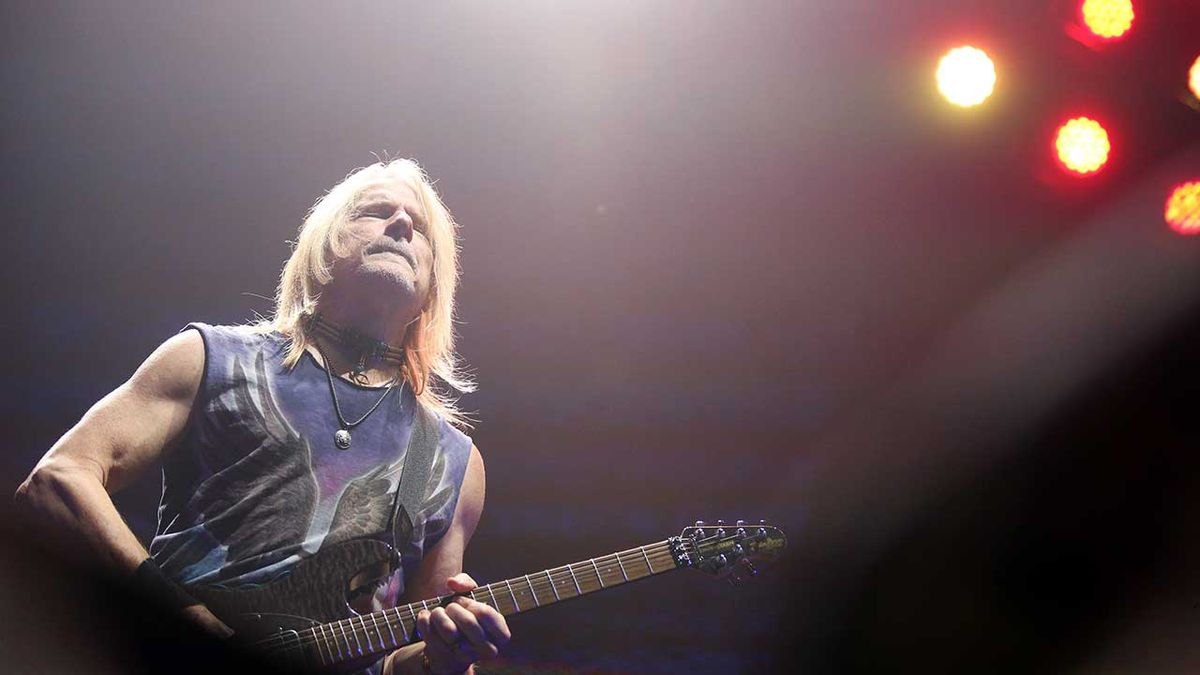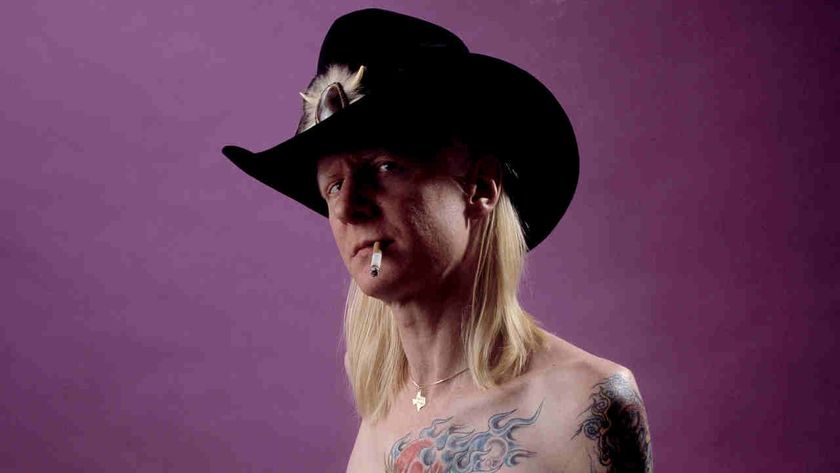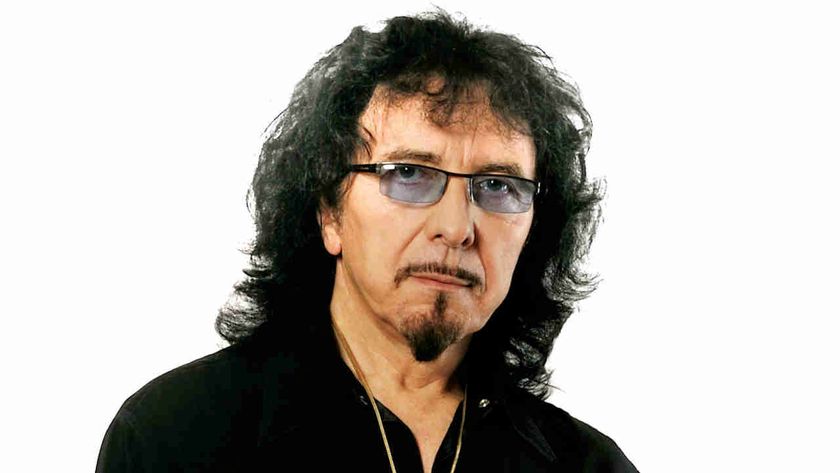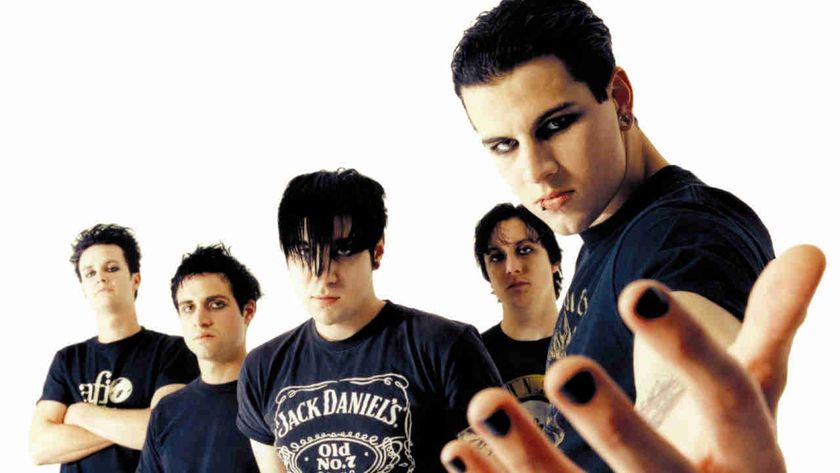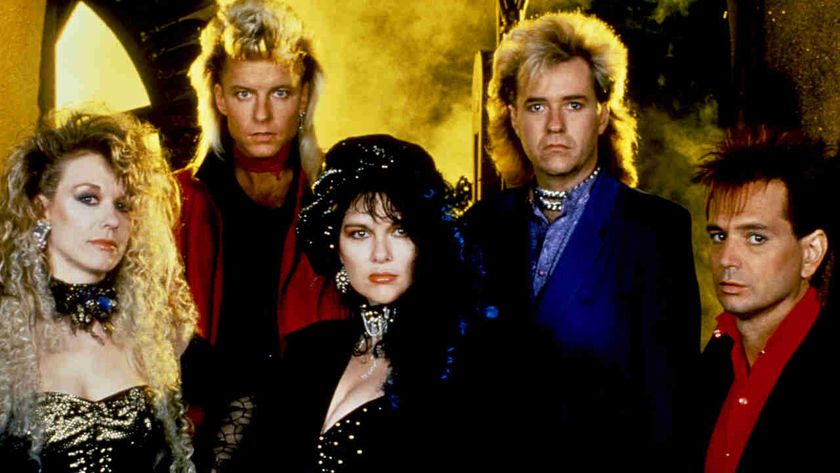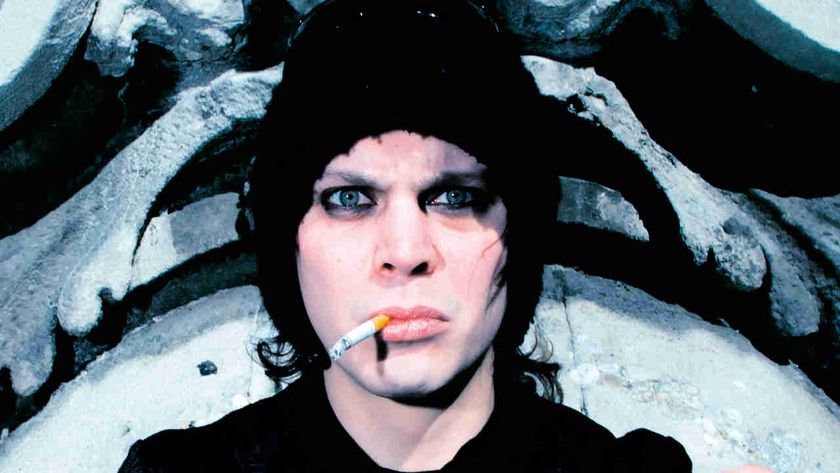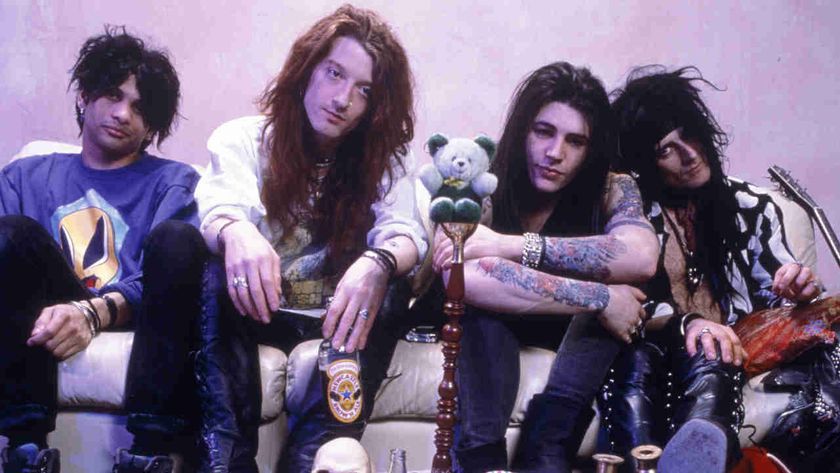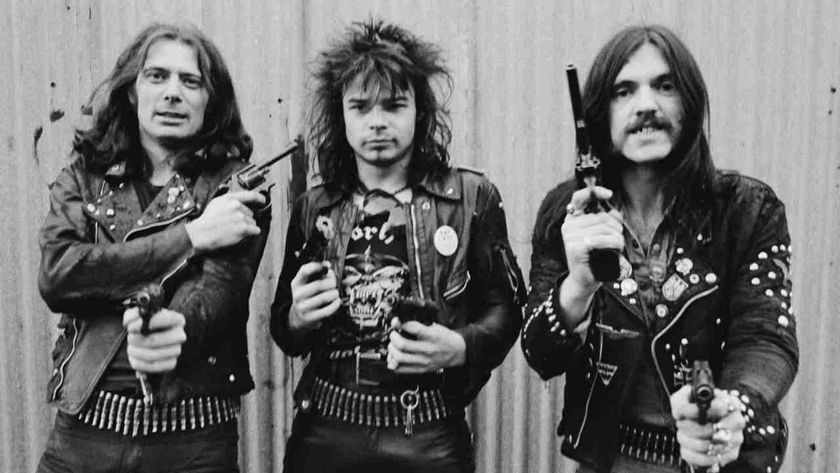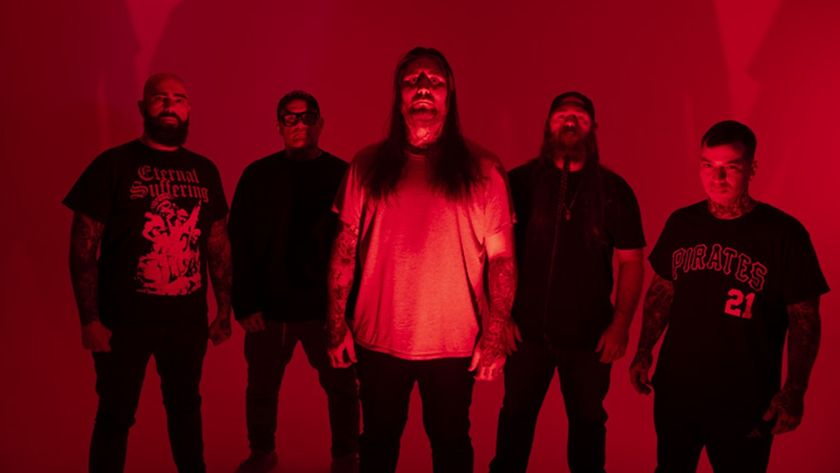Deep Purple guitar virtuoso Steve Morse didn’t include Crosby, Stills & Nash’s debut album on his list of the 10 records that changed his life – it narrowly missed the cut, along with a handful of others – but he says that the disc had a dramatic impact on him.
“I remember when it came out,” says Morse. “I listened all the way through, and I looked at a friend of mine and said, ‘It’s impossible to make a record this good.’ It was just so well done. To me, there were The Beatles, and then Crosby, Stills & Nash came out, and it was like, ‘We’re at that same level of production, but it’s a totally different kind of music.’”
During his storied career, which in addition to Deep Purple includes founding the revered instrumental giants the Dixie Dregs (later known as simply the Dregs), a stint in the band Kansas and numerous solo recordings, Morse has made it a point to take superlatives about his own work in stride – this despite winning practically every “best guitarist” poll ever invented.
“It’s great to get compliments about what you do, but I have to remember that I’m just like everybody else,” Morse notes. “The guy I pass on the way to gig who’s digging up the water line is no better and no worse than I am. He’s just different. When people have such superlative comments about anything I’ve done, I know that it’s simply a matter of the way it struck them. My music came to them at a certain lucky time in their lives where they were receptive to being influenced by something. On another given day, they might not feel the same way.
“Still, it’s interesting to me because it shows me there are other people who have similar tastes to myself,” he continues. “When I put something out, it’s because I had an inspiration that is sort of embodied in music. It’s something real, it’s something that moves me, so if somebody else really agrees with that, that’s really cool. But I can’t really think of that when I’m writing or recording something. You can’t predict or anticipate anybody’s reaction. You just do it and hope for the best, really.”
Below, Morse runs down the 10 records that changed his life.

The Beatles - Meet The Beatles (1964)
“The Beatles’ appearance on Ed Sullivan happened to coincide with my getting a little battery-operated tape recorder for Christmas. I was 10 years old and I was experimenting with the recorder, and so when the Beatles came on the show, I thought, ‘Here’s some music. I’ll record it.’ I listened back to it and realised how much I liked it.
“My friend got the album, which was pretty amazing when you consider that you had to scrape up a few bucks to buy it. Albums were expensive back then, especially for little kids. So my friend was like the kingpin of the neighbourhood because he had Meet the Beatles.
“We would go over his house after school and listen to the record. It was great – the music just floored us. But I do remember that when it came to the ballads, we kind of looked at each other with our heads slightly askance. My friend said, ‘Well, every album has to have some of these…’ We would skip over it the ballads. But everything else was great.”
The Who – I Can’t Explain (1965)
“I loved that song. I would listen to it on our record player in the basement. My dad had built this amplifier for it from a Heathkit. Those were little electronic kits that you could buy, and you would assemble electronics yourself at home. That Heathkit amp actually became my first guitar rig for a while.
“I Can’t Explain has all the essential pop elements, just like You Really Got Me – a great rhythm part, nice vocal melodies, cool guitar and a fantastic sound. Everything was in the right place.
“I got to see The Who at this tiny little club in Ann Arbor, right next to where we lived. It was such a small club – I wonder if it was a booking mistake or something. But I got to sit on the floor and watch Pete Townshend from three feet away. They played I Can’t Explain, and I remember watching Pete wailing away on this old Strat. It was phenomenal – he had total command of the guitar. I remember thinking, ‘OK, I’ve got to get a Strat…’”
The Jimi Hendrix Experience – Are You Experienced? (1967)
“This was a real eye-opener. When Jimi did the backwards guitar solos and used all those cool effects, I just said, ‘This guy is a magician.’ It was the first time I’d heard anything like that – nobody was doing this kind of thing before.
“You know, everything about Hendrix – his soulfulness and lyricism, and the fiery way he played, just the way he owned it – was completely inspiring. ‘How does he do all this?’ It was like a mystery.
“I remember I was trying to play the solo to Are You Experienced? – I was plugged into a Princeton amp, trying to get the feedback like Hendrix; I was going for the swoops and bending the harmonics – and suddenly boom, the whammy bar broke off inside the block. That’s what you get for trying to be Jimi.”
Cream – Disraeli Gears (1967)
“Another one of those perfect albums. The songs were great, the singing was cool, and everything Clapton played was incredible. He just couldn’t do a bad solo. Everything about his approach – his choice of notes, his feel and tone – was exactly right. He sort of embodied a guitarist who could really play.
“I went to see them play live, and I just loved them. Like Hendrix’s band, they were like the perfect power trio. They would get into these long jams, but at the same time they kind of put a limit on them so they could get back to the tunes that had more compact arrangements. I sort of liked the fact that they didn’t try to overdo it. They put a lot of thought into what they were doing. Great musicians.”
Led Zeppelin – Led Zeppelin (1968)
“This album made a big impression on me. Jimmy Page’s riffs, his arrangements, his production – such overall talent. But he also had a lot of restraint. He didn’t pile everything on all the time; he would bring something in here and there, steel guitar parts, and put it all together in just the right way. That really made a lot of sense to me as a teenager.
“I already knew of Page from the Yardbirds, and I’d heard that he’d played on various other records as a session guitarist. There was no way of knowing at the time what was true or not. But man, when I listened to what he did on the first Zeppelin album, it became pretty clear that his talent was pretty well developed.”
Yes – Fragile (1971)
“Wow, it was amazing for so many reasons. Steve Howe played, as he calls it, his Spanish guitar,’ but I would call it ‘classical guitar.’ There’s some truly brilliant playing on Mood for a Day – really unusual riffy licks. Everything was so easy to listen to and was so compelling. The band was pretty innovative in their writing and arrangements.
“I found out later the kinds of influences that Steve Howe brought to the table, people like Wes Montgomery. I just knew that he sounded different, and maybe part of that was because he played that big guitar, the 335. He had a very acoustic kind of sound when he played electric. I remember thinking, ‘That’s pretty cool…’ At this point, it seemed as if everybody playing either Strats or Les Pauls, so Steve was doing something very unique.”
The Allman Brothers Band – At Fillmore East (1971)
“We didn’t know it was called Southern Rock at the time. I think that might have come a little later on. The Allmans were brilliant. They were the first band where that two-guitar thing hit me right in the soul. All the parts were worked out really cleverly and with great feel.
“We used to go see them; they would play for free in Atlanta on a regular basis. They were part of the community, and people just loved them. You had to be some kind of alien to not like the Allman Brothers. They sounded so good – all the arrangements, the brilliant musicianship. Nobody could go to a concert of theirs and not be amazed.
“I liked both guitarists, Duane Allman and Dickey Betts. I remember thinking that Duane was so soulful and so lyrical with the slide stuff. We called it ‘bottleneck’ at the time. I was like, ‘What the heck is that? How do you do it?’ With the Allmans, I got to see how it was done. It seemed to me that he was leading with his right-hand fingers so that he got the purity of only the one note at a time. He would hold that string just exactly as long as he wanted it before he would kill it and go to the next string. It made just such a seamless sound.”
Wendy Carlos – The Well-Tempered Synthesizer (1969)
“I heard this in Music Appreciation class. They had introduced us to Switched-On Bach. The idea was that here was classical music that the kids would like. Well, I did like it, and I got to borrow this album from one of my brother’s friends.
“I remember thinking, ‘I’ve seen some amazing bands, I’ve seen some amazing players, but now this is music.’ The music is coming alive to me, and because of that, these composers became a big influence.
“Walter Carlos, as he was called at the time, picked just the best stuff. It’s like, talk about cherry picking, you know? ‘Let’s pick a couple hundred years of writing, and how about we just pick the most incredibly attractive pieces?’
“The musicianship is impeccable, and the sounds are incredible. Everything is going through these oscillators, voltage-controlled amps and filters. I had never been aware of how much planning and work could go into a masterpiece. I read that each part was done one note at a time, and the parts were multi-tracked – pretty stunning. It’s still one of the most amazing things I ever heard.”
Mahavishu Orchestra – The Inner Mounting Flame (1971)
“It was my freshman year at the University of Miami School of Music. Chick Corea had made a big impression on some of the jazz people. Like, you were OK with the jazz guys if you were into Chick Corea. They had also been talking about the Mahavishnu Orchestra because John McLaughlin had played with Miles Davis.
“I didn’t really get the Miles stuff that featured John – it just didn’t speak to me – but when Mahavishnu arrived with The Inner Mounting Flame, it was like, ‘Wow!’ That was a whole different story.’ All of a sudden, I got John McLaughlin. Here was a guy with energy, passion, he’s playing really interesting stuff, and he’s playing an electric guitar through a distorted amp. He was way cooler than I originally thought.
“Through a stroke of luck, Mahavishnu happened to be playing at the school. I was there early and got a great position for the concert, right in front of where John McLaughlin would be playing. When the show started, he looked at the other guys, nodded his head down, pushed the guitar neck down, and the whole band started playing this crazy shimmering chord. Then they played The Inner Mounting Flame. That was incredible.”
The Tallis Scholars - William Cornysh: Stabat Mater (2001)
“It’s music of William Cornysh. This is a good example of the kind of music that I like to listen to for inspiration. The lyrics are in Latin, and the syllables are very drawn-out, performed a cappella. It’s certainly not rock’n’roll; it’s the kind of thing you would hear in a movie during scenes with monks walking through cathedrals or something.
“The music is 100 years old. It’s a whole genre of music that I love so much, and it’s pretty fascinating. Back then, they didn’t write in four bar phrases or even two bar phrases; it wasn’t block chords – just weaving melodies.
“The writing and the sounds are inspirational. It just draws me in. There’s almost no classification for this type of meandering harmony, but I find it very easy to listen to and very pleasant.”
